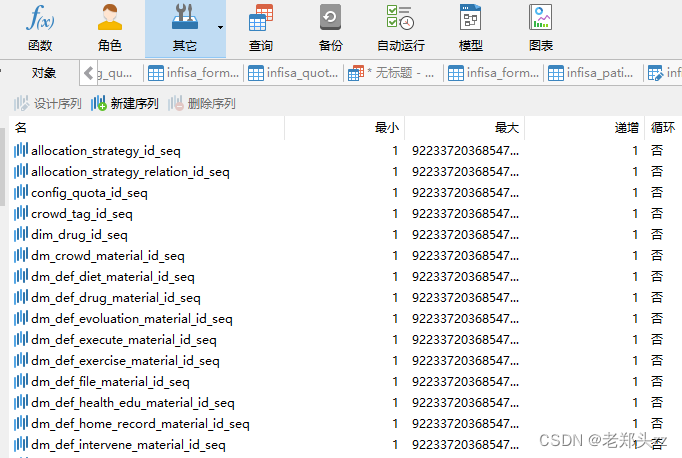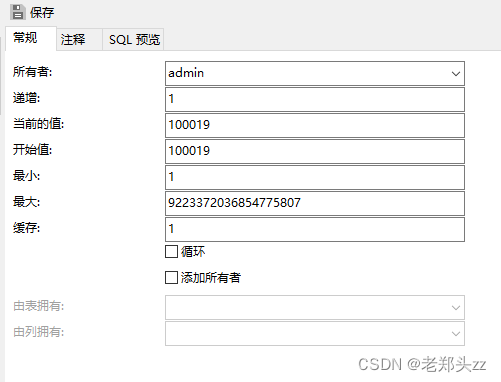上期有说,数据环境切换,由MySQL换成PostgreSQL。
那么为了大家以后少踩坑,简单总结了下我曾踩过的坑和需要注意的点。
首先PostgreSQL有一个模式的概念。
一、格式区别:
和Oracle一样,PostgreSQL也是严格区分大小写。
二、符号区别:
和Oracle一样PostgreSQL中," " 双引号是区分库名,关键字等,而MySQL则是反单引号(tab键上方的键),pg查询时字符类型的字段必须使用单引号,而MySQL带有优化器(不是必须)。
三、自增区别:
MySQL中使用auto_increment ,在需要的列指定自增,而pg中需要设置自增序列。
(1)使用SQL语句
①创建表时
CREATE table infisa_template_config(id serial );
②表已存在
<--设置序列从1开始,自增1-->
CREATE SEQUENCE user_id_seq START WITH 1
INCREMENT BY 1 NO MINVALUE NO MAXVALUE CACHE 1;
<--设置序列-->
ALTER table user ALTER column id SET DEFAULT nextval('user_id_seq');
(2)使用可视化工具
连接navicat15(或者使用DBeaver)
点击序列
可以通过可视化界面新建序列
注:同步数据的话,推荐通过sql方式新建序列。
四、函数区别:
(1)时间转化
①时间转字符串:
MySQL: date_format(a.tag_create_date,‘%Y-%m-%d %H:%i:%s’)
PostgreSQL: to_char(a.tag_create_date,‘yyyy-mm-dd HH:MM:SS’)
②字符串转时间:
MySQL: date_format(a.tag_create_date,‘%Y-%m-%d %H:%i:%s’)
PostgreSQL: to_date(a.tag_create_date,‘yyyy-mm-dd HH:MM:SS’)
(2) IFNULL()函数
MySQL: IFNULL(a.idm,‘’)
PostgreSQL: COLESCE(a.id,‘’)
(3) sysdate()函数
MySQL: SELECT sysdate()
PostgreSQL: SELECT now()
(4) find_in_set()函数(允许在逗号分隔的字符串列表中查找指定字符串的位置)
MySQL: SELECT t.dept_id FROM sys_dept t WHERE find_in_set(‘100’, ancestors)
PostgreSQL: SELECT t.dept_id FROM sys_dept t WHERE ‘100’ = ANY (string_to_array(ancestors, ‘,’))
(5)group_concat()函数
MySQL: select a.name,group_concat(distinct city)from user_city a group by a.name;
PostgreSQL: select a.name,array_to_string(array_agg(distinct a.city),‘,’)from user_city a group by a.name;
(6)LIMIT
MySQL: select id,name from hospital.ods_user_basic limit 10,2;
PostgreSQL: select id,name from hospital.ods_user_basic limit 10 offset 2;